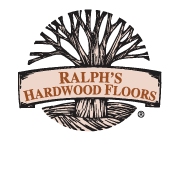When wood is milled into boards for hardwood flooring, there are several methods used, but three are most common. Each method produces distinct characteristics that might particularly appeal to you. It’s essentially a matter of personal taste—although you can’t forget about functionality and cost.
Plain-sawn
This is the simplest and most-common milling method. Logs are sawn with a series of parallel cuts lengthwise (in the direction the tree grows, not across the tree).
Boards cut from the edge of logs will be narrower than those cut from the center. They also have larger, more “open” grain patterns because the growth rings are nearly parallel with the cut.
Planks cut from the center of logs are wider and have tighter, more vertically aligned patterns because the wood’s growth rings are nearly perpendicular to the cut.
In terms of functionality, plain-sawing (also called “flat” sawing) leaves the wood more susceptible to cupping, crowning and gapping than the other methods. However, plain-sawn is the least expensive of the three options, in large part because it wastes the least wood.
For many homeowners, this affordability is just icing on the cake—the open feel that’s possible with plain-sawn planks is exactly the look they’re after.
Quarter-sawn
This milling method begins by sawing a log into four quarters. The quarters can then either be plain-sawn or flipped from flat edge to flat edge between each cut. Plain sawing the quarter is relatively easy but wastes a lot of wood; rotating the log quarter between each cut wastes less wood but obviously requires more labor.
Because the growth rings in quarter-sawn planks are more perpendicular than parallel to growth rings, quarter-sawn boards usually have tight, vertical grain patterns.
In some woods, the quarter-sawn method also produces pleasant, ribbony “ray flecks,” which occur when the cut crosses the wood’s rays, which transport nutrients laterally within trees. Quarter-sawn oak flooring, in particular, has beautiful ray flecks.
Quarter-sawn planks have more stability than plain-sawn planks, with less tendency to expand and contract with moisture and temperature variations, but quarter-sawn hardwood is typically more expensive than plain-sawn.
Rift-sawn.
This method produces the most stable boards, but it’s also the most expensive of the three choices—and the least common. Logs are cut radially, perpendicular to the wood’s growth rings, from the edge to the center. This results in a lot of wasted triangles of wood between each plank—frequently almost as much waste as usable wood. But the rift-sawn method produces the most-stable planks with the straightest grain patterns, making it a desirable method for a highly elegant, formal look.
Take a Look for Yourself
The best way to select between the three milling methods is to visit the showroom of a quality hardwood flooring company and ask to see samples of each method. You’ll also be able to talk to a hardwood flooring specialist about how the milling method affects specific types of hardwood.















